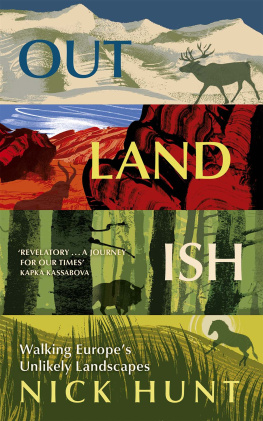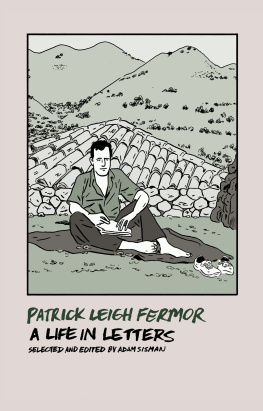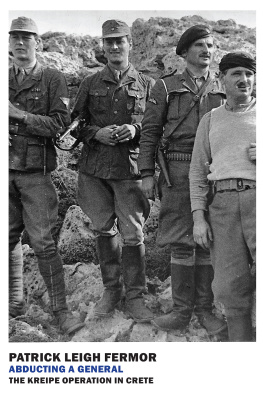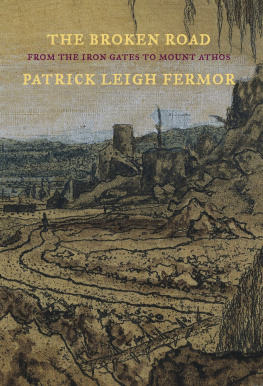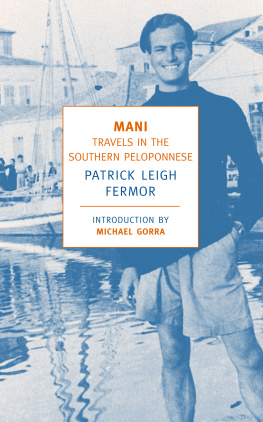Praise for
Walking the Woods and the Water
Vivid and hard-won.
Giles Foden, Cond Nast Traveller
Nick Hunt has written a glorious book, rich with insight and wit, about walking his way both across and into contemporary Europe. He set out in homage to Patrick Leigh Fermors legendary tramp across Europe in the early 1930s, but his journey became of course an epic adventure in its own right.
What an achievement! Good writing about walking, even when the destination is not in doubt, can be weirdly compelling to the reader, and so it was with this brilliant book, which was to me a page-turner, and this was in large part due to the style and sharpness of eye and ear. So many memorable encounters with people and places! I shared your joys at the mist-swirled Danube, still wild despite the dams; at the ice-gripped German forests; and at the pleasures of being alone and in motion in the world. I think my favourite moment of all and how PLF would have loved it was when, exhausted and freezing, and in the beginnings of real trouble, you suddenly stumbled across the pilgrim-shack, with a made-up bed ready for you to sink into it! Magnificent. It stood, too, as an emblem for the hospitality you received along the way.
A book about gifts, modernity, endurance and landscape, it represents a fine addition to the literature of the leg.
Robert MacFarlane, author of The Wild Places and The Old Ways: A Journey on Foot
In 2011 a rather older Nick Hunt, who as an eighteen-year-old had been inspired by A Time of Gifts, set out to follow in Paddys footsteps. Walking the Woods and the Water is his account of the same journey seventy-eight years later, a narrative that ranks alongside Paddys in its adventure, its observation of culture and nature, and in the quality of writing.
Peter Reason, author of Spindrift: A Wilderness Pilgrimage at Sea
Walking the Woods and the Water
In Patrick Leigh Fermors Footsteps
from the Hook of Holland to the Golden Horn
Nick Hunt

For Caroline, who taught me to walk
First published by
Nicholas Brealey Publishing in 2014
|
|---|
Carmelite House | Hachette Book Group |
50 Victoria Embankment | 53 State Street |
London EC4Y ODZ | Boston, MA 02109, USA |
Tel: 020 3122 6000 | Tel: (617) 523-3801 |
www.nicholasbrealey.com
www.nickhuntscrutiny.com
Nick Hunt 2014
The right of Nick Hunt to be identified as the author of this work has been asserted in accordance with the Copyright, Designs and Patents Act 1988.
ISBN: 978-1-85788-617-7
eISBN: 978-1-47364-517-2
British Library Cataloguing in Publication Data
A catalogue record for this book is available from the British Library.
All rights reserved. No part of this publication may be reproduced, stored in a retrieval system, or transmitted, in any form or by any means, electronic, mechanical, photocopying, recording and/or otherwise without the prior written permission of the publishers. This book may not be lent, resold, hired out or otherwise disposed of by way of trade in any form, binding or cover other than that in which it is published, without the prior consent of the publishers.
Printed in the UK by Clays Ltd, St Ives plc.
Contents
From Hook to Horn
I would travel on foot, sleep in hayricks in summer, shelter in barns when it was raining or snowing and only consort with peasants and tramps. If I lived on bread and cheese and apples, jogging along on fifty pounds a year there would even be some cash left over for paper and pencils and an occasional mug of beer. A new life! Freedom! Something to write about!
A Time of Gifts
IN DECEMBER 1933, EIGHTEEN-YEAR-OLD PATRICK LEIGH FERMOR set out in a pair of hobnailed boots to chance and charm his way across Europe, like a tramp, a pilgrim or a wandering scholar, on foot from the Hook of Holland to Istanbul. The books he later wrote about this walk, A Time of Gifts (1977), Between the Woods and the Water (1986) and the posthumous The Broken Road (2013), are a half-remembered, half-reimagined journey through cultures now extinct, landscapes irrevocably altered by the traumas of the twentieth century. The brilliant bubble of his writing captures a world of moccasin-shod peasants and castle-dwelling aristocrats, preserved in perfect clarity; at times his focus is so sharp the effect is hallucinogenic. But war, political terror and brutal social change lay on the horizon. That bubble was about to burst, and the raw light of the modern world would soon come flooding in.
I encountered these books when I too was eighteen, and they had a deep impact on me. On the simplest level, the narrative of a young man setting out to find his place in the world was something I identified with, because thats what I was trying to do; I admired his guts, his panache, his inexhaustible delight, even if some of his fascinations High Baroque architecture and the bloodlines of Europes noble families were things I could hardly relate to. But the essential spirit of the books the essential spirit of Paddy himself sunk into my subconscious and never went away.
And that spirit had company there. The irresistible archetype of a wanderer in unknown lands first materialised in the figure of my great-uncle, mountaineer John Hunt, who led the first successful ascent of Everest in 1953. I had grown up on his tales, wondrously embellished over the years, of weird howls above the wind and yeti footprints in the snow around his tent. His house was crammed with souvenirs from a lifetime of adventures, and his antiquated climbing gear cracked leather and polished wood, ludicrous-looking oxygen tanks, gloves the size of wellington boots seemed like artefacts from an age of greater magic. As a child I accepted that he had been to the realm of gods, a pure and everlasting place far beyond mans ordinary reach; rare adventurers such as him might be permitted to visit a while, but when they left, the mountain would return to its timelessness. The knowledge that such places existed as secure as fairytales, or my own imaginary worlds was deeply comforting.
Paddys vision of an older, wilder Europe hooked me in a similar fashion. Before Id finished reading the books, I knew with absolute certainty that one day I would follow in his footsteps, retracing his route through Holland, Germany, Austria, Slovakia, Hungary, Romania, Bulgaria and Turkey, in search of whatever was left of wildness and adventure. One passage from A Time of Gifts spoken by an old polymath in Austria in 1934 particularly haunted me: Everything is going to vanish! They talk of building power-dams across the Danube and I tremble whenever I think of it! Theyll make the wildest river in Europe as tame as a municipal waterworks. All those fish from the East they would never come back. Never, never, never!
Those words articulated my quest. Had Europe been tamed? Had everything vanished? One day, I would walk until I found the answer.
The idea lay dormant for twelve years. Perhaps if Id lived in a different time I might have set off there and then, but I came of age in an era of untaxed aviation fuel and limitless opportunities for travel; Europe, diluted so I imagined by the homogenising forces of modernisation and globalisation, would have to wait. Who wanted to visit Germany, when India was a short flight away? Why bother with the Rhine, when I could see the Ganges?
Next page

